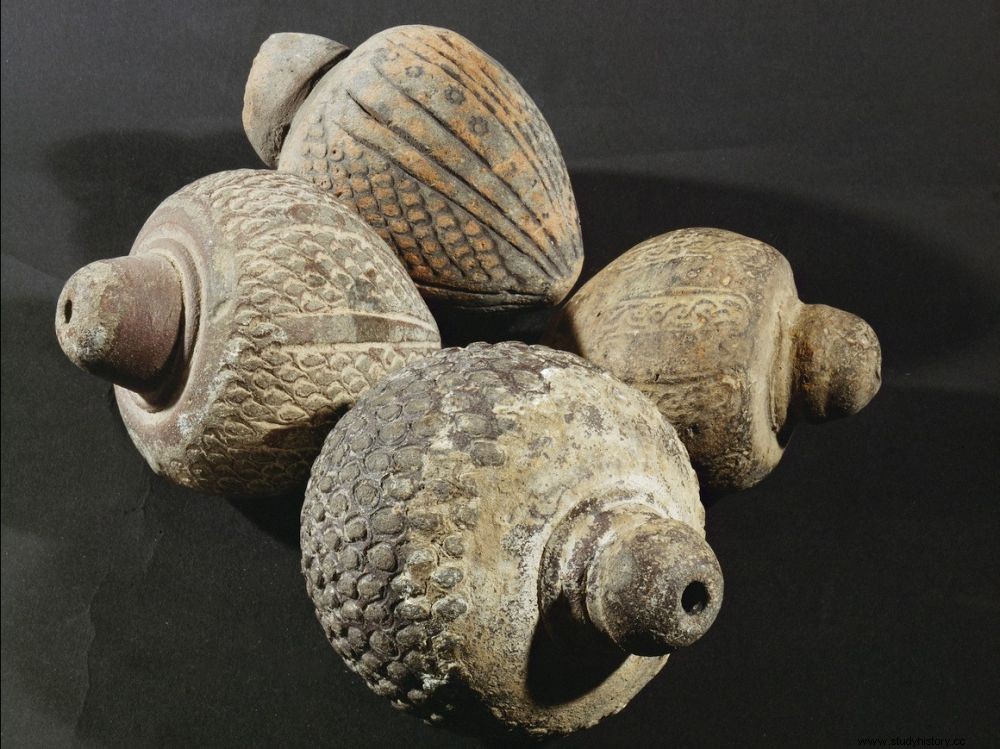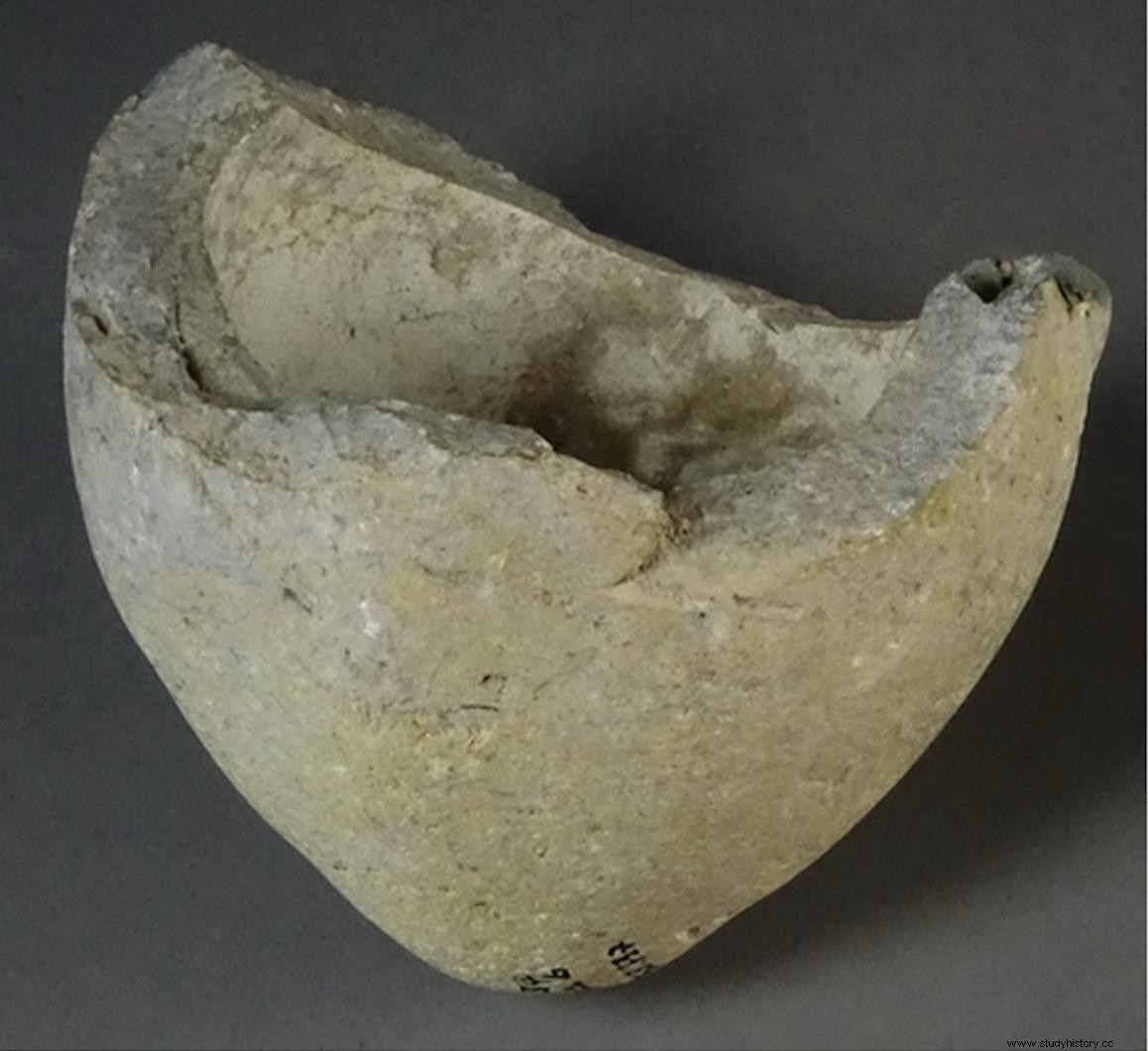Analyzes of ancient medieval pottery unearthed in the Old City of Jerusalem confirm that hand grenades were indeed used as offensive weapons during the Crusades.

Examples of medieval grenades, ceramic pots filled with naphtha and other incendiary products lit with a fuse to be thrown at the enemy. Heeresgeschichtliches Museum, Vienna, Austria.
They often look like nothing, yet many of their analyzes lead to great discoveries. Sometimes carrying ancient writings, other times possessing infinitesimal traces of the products they once contained, shards and shards of pottery constitute real memories. Recordings of events from the past that scientists now know how to detect using advanced technologies such as gas chromatography analyzes coupled with mass spectrometry, optical microscopy, or even X-ray fluorescence spectrometry.
This is exactly what has just happened with a team of researchers led by Dr. Carney D. Matheson, anthropologist and biochemist at Griffith University (Australia) with the extraction of molecular information recovered from the remains of 4 small sphero-conical vases found in the 1960s in archaeological levels dated to the 11th-12th century, from the Armenian garden, from the old city of Jerusalem (Israel).
In an article published in the scientific journal Plos One, these researchers explain that they have identified in three of them residues of oils, those of perfumed materials or medicinal contents. Gold on the 4 th -a sandstone fragment with very thick walls-, had traces of chemical compounds comparable to those of an explosive device. Probably a medieval grenade used during the Crusades!

Sphero-conical shard containing traces of flammable material dating from the Crusades, discovered in the Old City of Jerusalem. © Plos One
This pottery fragment did indeed contain potassium nitrite, sulfur and other substances characterizing an incendiary weapon. Of those filled with inflammable products used in Jerusalem by the Muslim armies against the Crusaders, in the 11th-12th century. This is the confirmation of the manufacture and use of oil and sulfur hand grenades by Muslim fighters at the time of the Crusades (1095-1291).
Pottery for storing chemicals
"Launched like grenades against Crusader fortresses, the use of devices producing loud noises and brilliant flashes has been recorded in medieval texts" , explains Dr. Carney D. Matheson, recalling in passing that previous studies had already identified similar incendiary devices on other sites of these same periods in the Middle East. The analysis published in PLOS One thus constitutes a valuable confirmation of the use of these weapons. "Small, unglazed, undecorated, thick-walled stoneware vessels from high firing may have had this specific function, which did not exist before the 9th century and after the 15th century, implying a definite category pottery intended for the storage of chemical products... or an explosive weapon" , says the specialist.
"In fact, one of the most striking earlier studies of medieval grenades was carried out in the 1940s by the French scholar Maurice Mercier" , adds Adrienne Mayor, historian of ancient science and technology at Stanford University (United States), who did not participate in the study. Joined by Sciences et Avenir, this specialist adds:"While quoting Maurice Mercier correctly, Dr Matheson does not mention the study of the many incendiary hand grenades used during the Battle of Cairo in 1167, including elements were collected in 1916 from the ruins of the old city of Cairo by Ali Bey Bahat (Cairo Museum) and the French archaeologist Albert Gabriel (1883-1972)" , recalls the one to whom we owe the book:Greek Fire, Poison Arrows and Scorpion Bombs (2022).
Artisans who had an excellent mastery of aerodynamics
At the time, a detail had indeed intrigued Maurice Mercier:"He had found that the containers found in the ruins of Cairo differed from those of similar shapes used for perfumes, ointments and medicines. The pots, specially designed for hand grenades, were all very thick-walled sandstone, and mostly had broken tops with very sharp edges" , says Adrienne Mayor. For the French scientist, only a powerful internal explosion could have caused such fractures. Cracks with sharp edges identical to those found on the specimen of sandstone analyzed by Dr. Matheson. "Several varieties of 'naphtha pots' - primitive Molotov cocktail incendiary bombs are on display at the Cairo Museum (Egypt) , as well as at the Louvre, in Paris" , says Adrienne Mayor. In essence, the ancient hand grenade makers had a great knowledge of explosives and incendiary materials and they were able to create stronger stoneware ceramics, as Dr. Matheson points out. "These craftsmen also had an excellent mastery of aerodynamics to propose these sphero-conical shapes as hand grenades" , points out Adrienne Mayor.
According to the historian, going back to the depths of history and greater antiquity, ancient Assyrian bas-reliefs show that such hand grenades filled with oil were already used in Mesopotamia. Archaeologists also discovered in Pakistan, in 2006, chemical substances coming from "balls of fire" of bituminous materials used at the time of Alexander the Great, in 327 before our era, while this one was in Ghandara (between Pakistan and Afghanistan).
"It would seem that the use of incendiary grenades is therefore even older than the medieval era, the subject of this article" , summarizes Adrienne Mayor. "New research on these explosive contents should allow us to better understand the antiquity of the use of these weapons during the medieval period in the Eastern Mediterranean" , concludes in his study Carney D. Matheson.
An original fuel
Naphtha is a term whose root of Persian origin designates a mineral oil used in Mesopotamia as fuel. In Arabic, "nafṭ" also means oil or bitumen. In Book II of his Natural History, the Roman Pliny the Elder (1
st
century A.D.), writes:"Naphtha is a substance that flows like bitumen liquid, in the neighborhood of Babylon and in Astacene, Province of Parthia" . Naphtha oil may also have been one of the components of the famous Greek fire used by the Byzantines until the 14th century.
